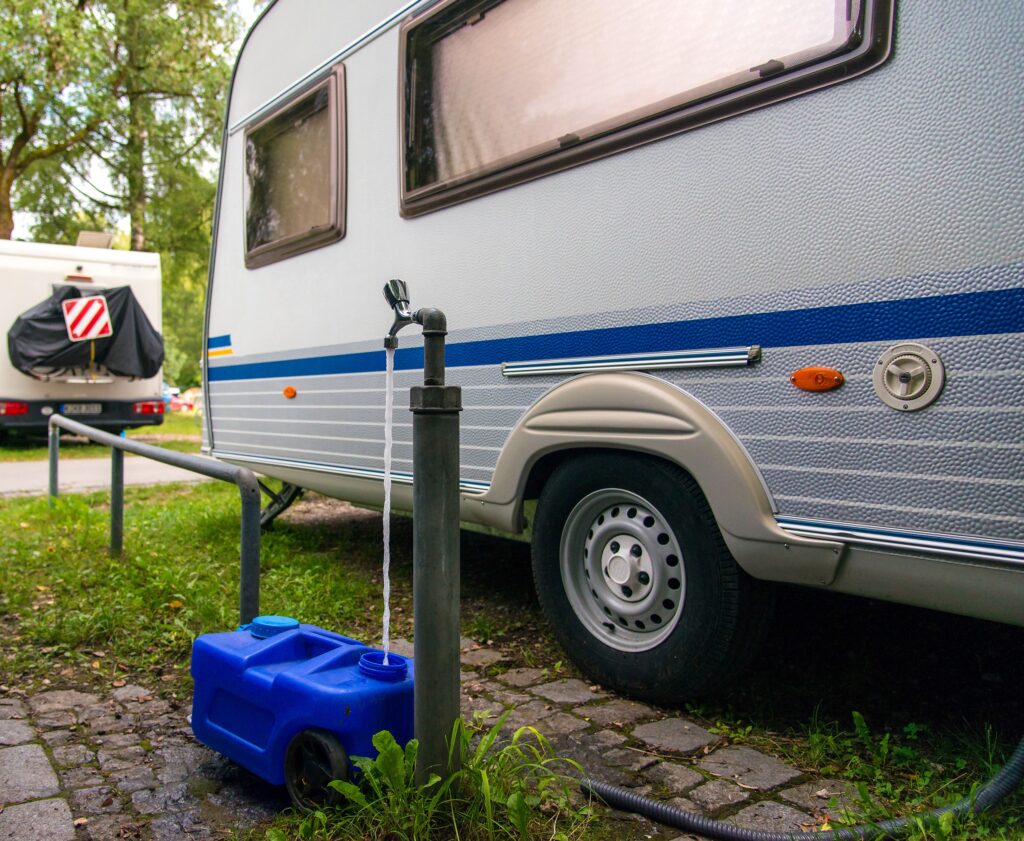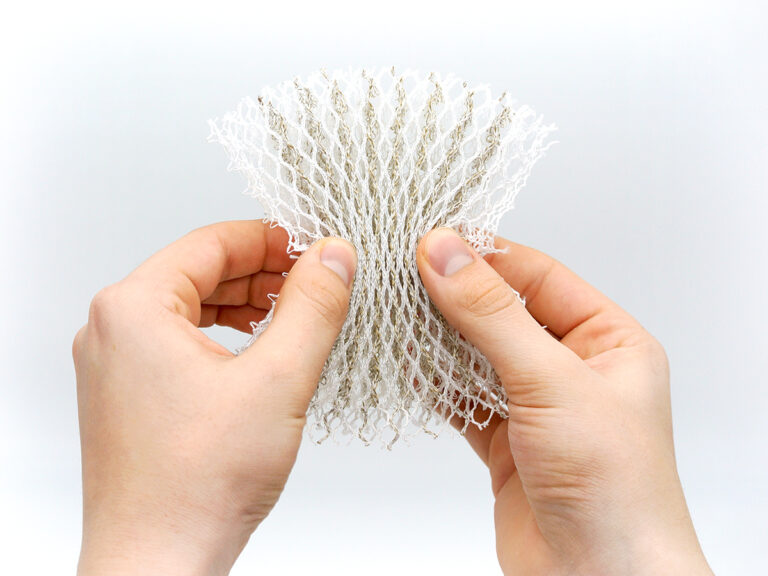Keeping water fresh in the motorhome – what campers should pay attention to

Regardless of whether you are only on the road for a few days or for a longer periods: Fresh water is always a precious commodity when traveling. You use it daily for drinking, cooking or brushing your teeth. We explain how you can make water in the motorhome stay fresh over a longer period of time.
Content
Supplying fresh water on the move is not always easy
Tap water in Germany is of drinking water quality. The water at northern or western European campgrounds is also usually drinking water unless otherwise signposted. But that can change quickly once you travel to another country. The luxury of potable tap water is not standard everywhere. So before you fill up the fresh water tank of your motorhome, make sure about the quality of the water.
How long does water stay in the water tank?
How long the water in your motorhome tank will last depends on the quality of the water you fill it with. Other factors include water temperature, cleanliness of the drinking water tank as well as the piping system and, of course, the use of preservatives such as silver nets. They all affect longevity. This is how long water usually lasts:
- 1 Week– If clean drinking water from the tap is put into a clean fresh water tank, it will keep for about a week.
- 1 Month– Clean drinking water that has flowed through a fine-pored filter into the clean fresh water tank or has been specially disinfected stays fresh for up to a month.
- 1 Year– With preservatives based on silver ions, the water can be kept for a year or more.
Over time, stored water can go bad, no matter how clean the tank is. The reason is microorganisms such as bacteria and fungi, which are inevitably present in the water, as well as biofilms in the tank and pipes. Stagnant water in the water tank offers ideal conditions for bacteria and the like to multiply. Luckily, there are ways and means to counteract the growth of germs in the fresh water tank and also to conserve the water for a longer period of time.
How to keep the fresh water tank in the motorhome clean
In order to prevent bacteria, viruses and biofilms from forming in the first place, a number of points must be observed.
- Fill up with clean water: Anyone who obtains water from a drinking water source can generally look forward to a very good longevity. It lasts longer than fresh water from nature, as this often has many nutrients. Nutrients sounds good at first, but it also means that bacteria and algae can multiply much better.
- Cleaning the water tank: If you take care of your fresh water tank, you’ll get more out of it in the long run. Regular tank cleaning and disinfection help keep water fresher for longer. Thorough cleaning is sufficient once or twice a year.
- Use your own hose: Sounds more banal than it actually is. The hose for filling the drinking water tank is one of the largest sources of contamination of water tanks. Once the hose has been in the sun for a few days, it provides the ideal conditions for the formation of a biofilm. It is therefore best to use your own hose and clean and disinfect it regularly.
Of course, there are other ways to keep the tank clean for as long as possible. However, with the three mentioned above, you have already taken three very important steps towards keeping your drinking water clean.
How often do you need to change the water in the motorhome?
As already mentioned, untreated fresh water should not remain in the tank for more than one week. Especially on hot days or in warm areas, it makes sense to change the water more frequently. If filters, disinfectants and preservatives are used, water can be kept in the motorhome for a longer period of time.
What to do if the motorhome water stinks?
A strange taste or smell of the water or if the water changes color are often the first indications of contamination in the water tank. If the water smells like plastic, it’s probably just the tank. However, if it gives off a musty odor, this may indicate bacteria or a biofilm. Older calcified fresh water tanks in particular often harbor odors. But what now?
In most cases, thorough cleaning of the water system with well-concentrated chlorine dioxide helps. Repeated flushing of the pipes can also combat the problem. If you buy an older motorhome second-hand, you never know how long it may have been standing. But sometimes even the best tank cleaning is not enough. If the pipe system is 20 years old or more and no more remedies will help, replacing the water pipes or the tank is sometimes the last resort.
Silver ions as an aid to keep water fresh in the motorhome
Silver ions have the practical property of inhibiting and reducing germs. Once you’re tanking with drinking-quality water, adding a silver net can greatly increase the longevity of the water.


The silver net works automatically on contact with water or moisture and releases silver ions in a self-regulating manner. Bacteria, algae and fungi can now hardly multiply anymore. Depending on its size, a silver net can even protect the water in a water tank with a capacity of several hundred liters from bacteria formation over a longer period of time.
Where can campers fill up their motorhome water?
If you want fresh water in your motorhome, you will need to refill the fresh water tank from time to time. You have a few options for this:
- Campsite: Topping up the water at a campsite is of course a classic. Whether you are on vacation at the campsite for a longer period of time or just for one night – you can fill up here with fresh water without any problems.
But be careful: At some water stations there are two different taps. One for fresh water and a second for flushing the toilets. Be sure to use the correct one.
- Filling stations: Filling stations are another source of water while on the road. Here you can often find a fresh water hose, which can be used if you ask nicely. Here you can also get information about the quality of the water.
- Wells or springs: Especially in Scandinavian countries and mountainous regions, you may come across a well or spring water. The best indication of clean water is local people using the water source. To eliminate any possible hazards, you should check the water with a water test before use or send it through a filling filter.
What happens to water in the motorhome in winter?
Leaving water in the motorhome in the winter is not a good idea. The water pipes are usually made of soft plastic, which is flexible to a certain extent, but the fittings to the tank or taps are usually made of a harder material. Because water expands when it freezes, this stress can cause parts of the water system to rupture or burst.
However, to counteract this, you should drain all water from the tank and pipes to dry out the system. Do not forget about the pump and the boiler. You can also use a possible service flap to wipe the tank dry with a cloth. If there is no water left, nothing can freeze. Especially those who park their motorhome over the winter should try to reduce the number of possible bacteria to zero. A dry and disinfected tank is a great advantage.
Motorhome water drains poorly: What should I do?
If the motorhome water drains badly, in particular from the shower, sink or wet room. It drains away conspicuously slow or not at all. But what can you do?
As a rule, the cause of poorly draining gray water can be found in the drain pipe. These are often installed horizontally or, due to the current parking position, cannot ensure a free flow of water due to a slight incline. Here it helps to simply move the motorhome a little and the water flows again. Dirt from washing dishes, leftover food or sand from showering also like to clog the pipes. With trapped air in the tank or pipes, the problem gets a bit more complicated. The best way to get the dirt out of the system is to thoroughly clean the pipes. In order to get the air out, the tank must be bled. To do this, the entire water system must be emptied and all vent valves must be opened. Then refill with water – the problem should then be gone.
Conclusion
In order to enjoy fresh water while camping for longer periods of time, you should take some precautions. Always be aware of where the water is coming from and how you use your water system when you are out and about. With proper hygiene and care, everyone can keep their motorhome water usable for a long time.